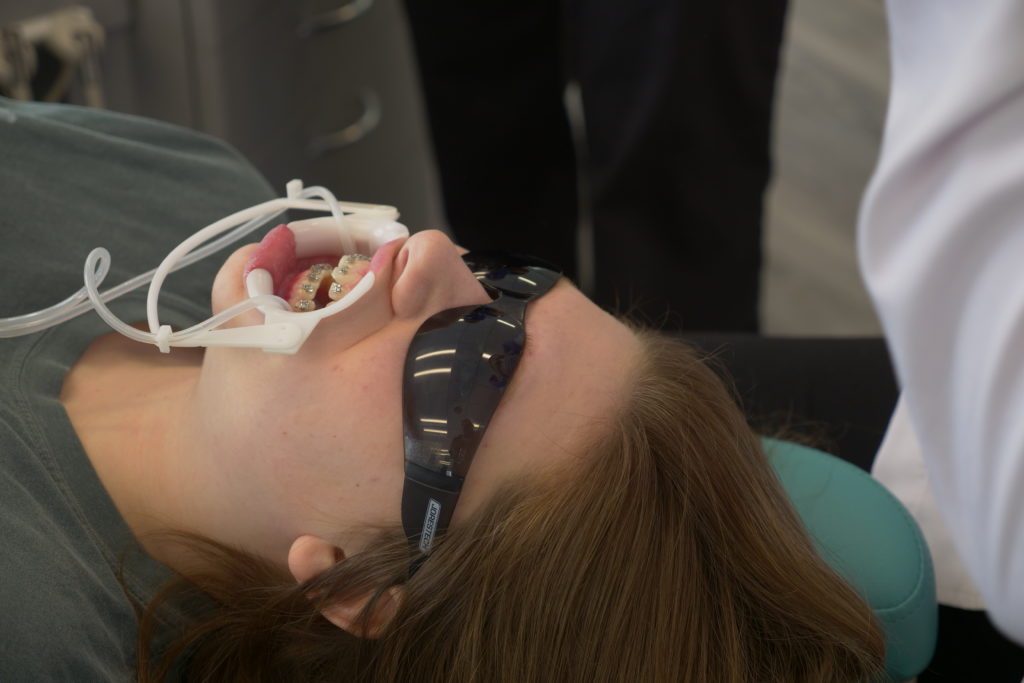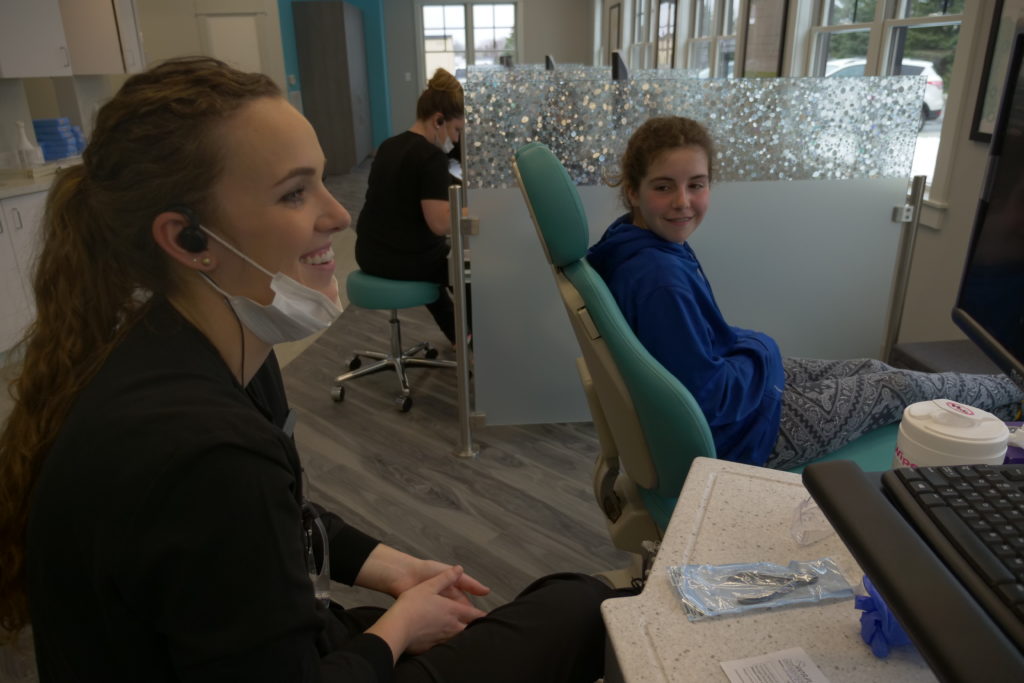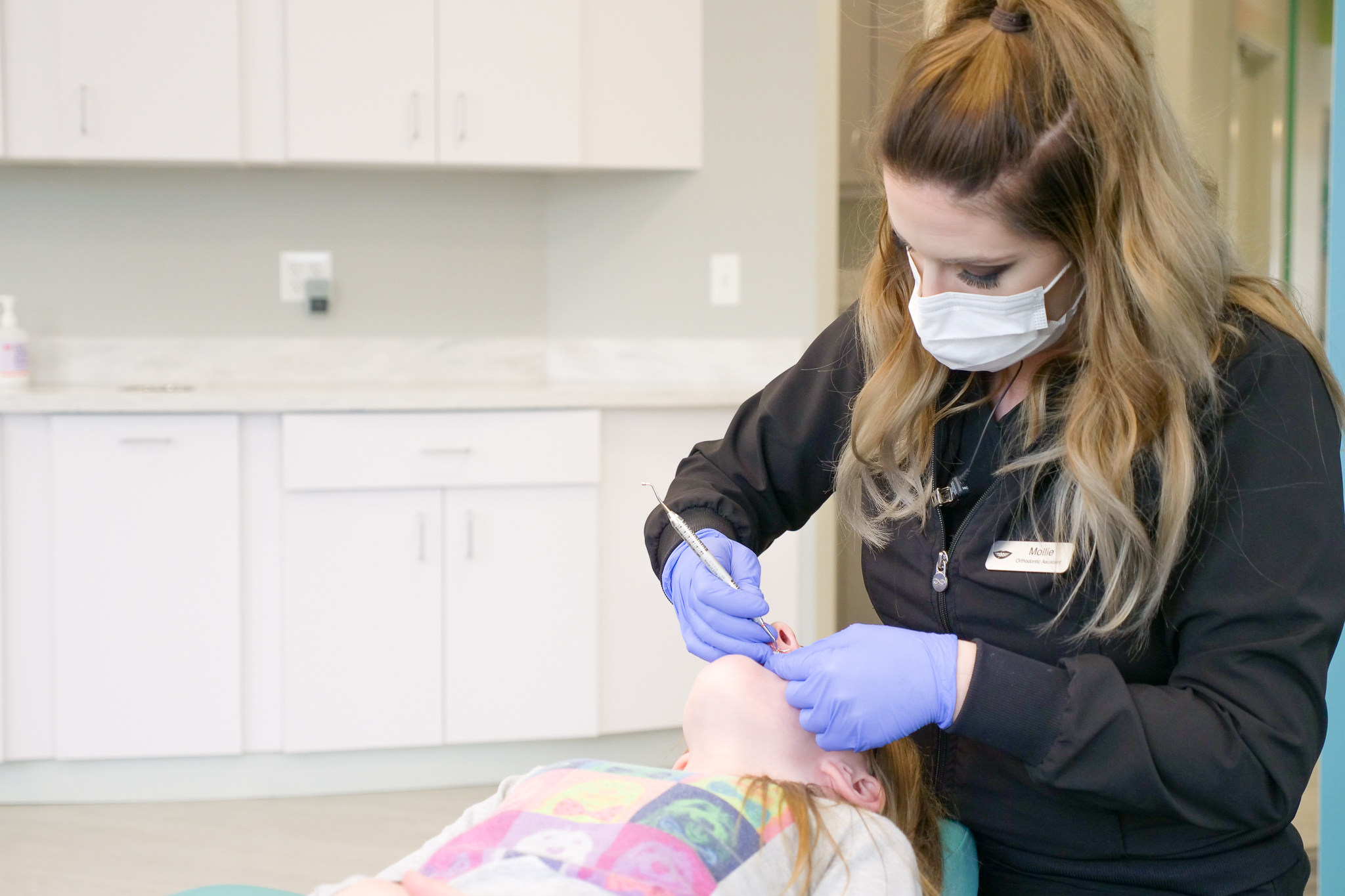When it comes to correcting misalignment and straightening smiles, traditional braces are one of our most efficient tools. They’re also one of the most recognizable! Braces have been around for a long time, and have a well-established history of successful treatment. These orthodontic workhouses are incredibly efficient at correcting oral issues that range from mild to complex. While traditional braces remain one of our most popular treatments here at Swan Orthodontics, there’s a lot about them that new patients don’t know. We’ve put together this Braces FAQ to help you navigate all the information, so keep reading below to learn more!
What are braces made of?
Braces have quite a few components that work together to move teeth over time into their desired positions. These include:
Brackets are typically made from a mix of stainless steel, nickel, and other high-quality metals. Because of this, they are very durable and long-lasting. Brackets have little hooks or doors, over which the wire is threaded, and can be secured either by closing the door or by applying an elastic over the top of the wire.
Glue
Although some orthodontists may attach the brackets to a metal band, it’s much more common these days to attach the bracket directly to the tooth with glue, which is technically a form of composite bonding material. In cases that require more serious treatment, metal bands may be used together with glue to give the braces more leverage and stability.
Wires are thin pieces of metal that run from one bracket to another. The shape and curvature of the wire will be adjusted by Dr. Swan in order to move your teeth in the desired directions. Crimps are sometimes made in the wire to help push or pull any teeth that are especially stubborn. In certain cases, the wire will attach all of the bottom or upper teeth together, but occasionally we will cut the wire strategically if connecting just a few teeth is better for the treatment plan.
Elastics are essential for patients who need bite correction, and are generally strung between an upper bracket hook and a lower bracket hook. This pulls the upper jaw backwards to correct an overbite, or the lower jaw backwards to correct an underbite. We may also use rubber bands for several different scenarios, especially when we want to exert extra pressure on the teeth or jaws.
These stainless steel rings are cemented to the teeth using dental bonding agents. While they can provide an anchor for braces and some other orthodontic appliances, they are not used with all patients.
These small elastic “donuts” or rings can be used to create space in between the teeth when needed, typically before bands are placed. They are sometimes referred to as separators.
Elastic ties/o-rings/ligatures/colors
These tiny rubber rings or bands are used to attach the arch wire to the brackets. They tend to be less rigid than spacers and come in a wide variety of colors.

How do traditional braces work?
The first step in braces treatment happens before the brackets are even attached, during your free consultation. Our team will take photos and x-rays of your mouth, and once the records and an optional scan are complete, Dr. Swan will use this data to help formulate a customized treatment plan for your smile. This will include planned movements for your teeth, which will help her decide how to place the brackets. As an example, if you have some teeth that need to be tilted, the positioning of those brackets will be different than the positioning of brackets for teeth that need to be turned.
Once the brackets have been attached, the wire will be inserted. We encourage specific and precise movements by using bends in the wire to provide different types of pressure on different teeth. This can help a tooth that is twisted to turn and face the right way, or align a tooth that is too far forward with one that is too far back. This process of tooth movement is called remodeling.
Remodeling involves minor changes in the bone that surrounds the roots of teeth. When pressure is put on the tooth, cells called osteoblasts and osteoclasts will form around the tooth’s root. The pressure of the wire, the osteoblasts, and the osteoclasts together create a negative pressure on one side of the tooth. At this site, bone is removed. On the other side of the tooth, bone is reformed. As pressure is put on the tooth and the bone of the tooth and the jaw is remodeled, the tooth will slowly move into the correct position.
However, this process is only able to occur if constant pressure is put on the tooth. As bone is absorbed on one side and then deposited on the other side, the tooth can move. Once the pressure stops – such as when braces are removed – the tooth will begin to settle into its new position, but most will begin drifting back to their old positions over time. This is why patients are given retainers, and why it’s so important to always wear them as directed! Regular retainer use will help keep teeth in their new, improved positions and prevent natural drifting.
What are the basics of braces care?
Traditional braces can come with a bit of a learning curve. Maintaining metal braces in particular can sometimes be challenging, particularly in the beginning, but with patience and practice, you’ll get the hang of them in no time!
Dental hygiene is important for everyone, but it’s even more imperative that orthodontic patients keep their teeth and braces clean and free from debris during treatment. Food particles can get stuck in the nooks and crannies of braces, giving bad bacteria a place to grow, but brushing and flossing with brackets, wires, and bands can be tricky. The good news is, there are many accessories available that are designed to make oral hygiene easier for braces patients. Oral irrigators like a Waterpik use a pressurized stream of water to help thoroughly rinse hard to reach places, and ortho-picks are really helpful for braces-specific flossing.
You’ll also need time to adjust to the food restrictions that come with traditional braces. In order to protect vulnerable parts of your braces, as well as your teeth, you will need to steer clear of anything too crunchy or too chewy, like some raw fruits and veggies, popcorn, gum, nuts, and many kinds of candy and chips. Remember, this part is only temporary – it will all be worth it when your braces come off and you see your beautiful new smile in the mirror!
How often are follow-up appointments?
We’ll need to track your progress and make adjustments to your braces at regular intervals throughout your treatment, usually every 6-10 weeks or so. During these follow-up visits, Dr. Swan will change the bands that are attached to the brackets, and the wire may be replaced at this time as well. Our team works hard to keep these appointments as short as possible, so you can get back to work, home, or school as quickly as possible! Although you may experience some slight soreness following an adjustment appointment, it should only be temporary.
Do your best to never miss these follow-up visits! They’re a crucial part of your overall treatment plan, and help us ensure you get very best results in the least amount of time.
How long does braces treatment last?
This may be the million dollar question, but it’s one we can’t really answer! Every smile is different, and every patient responds to treatment in their own way, so there is no “one size fits all” answer to how long you’ll need to be in braces. In general, the average time spent in braces is around 18 to 22 months, but this will vary on a case-by-case basis. Fortunately, signs of improvement can often be seen in just a short period of time with traditional braces, which can help give you confidence during the treatment process, and encourage you on your journey towards a healthier, straighter smile!

Take the first step towards a straight smile with Swan Orthodontics
Here at Swan Orthodontic, we are committed to providing every patient we treat with the highest-quality, individualized orthodontic care. Our talented team will make you feel welcome and valued from your first appointment to your last, and we have created a warm, relaxing environment that will help you feel at home the moment you walk through the door.
If you’re Caledonia or the surrounding communities, and would like more information on how braces can benefit your smile, get in touch with us today. You can schedule your free consultation with us by clicking here or by calling us at 616.698.2323. We look forward to putting a smile on your face!

